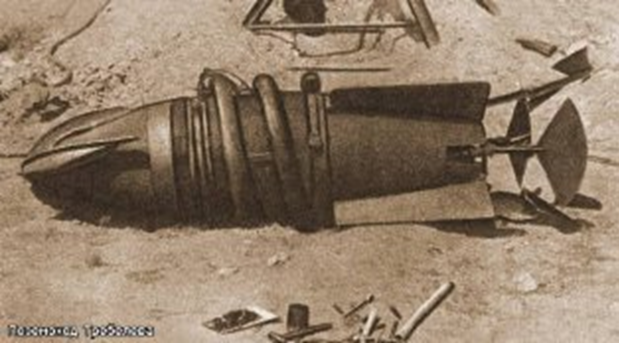Soviet Subterrene.png

When we think about the uses for nuclear power, it is usually in terms of generating heat and electricity for commercial and residential use. Over the years there have been suggestions for using nuclear bombs to excavate canals, create harbors, frack for gas and oil, and create huge caves. None of these applications proved to be practical and were never used. Today, I am going to write about the idea of using nuclear power dig tunnels.
In the 1950s, LANL built a mock-up of a reactor that could heat propellant to about fifty five hundred degrees Fahrenheit. The project was ultimately canceled. One of the engineers who had been working on the project was inspired by the Edgar Rice Boroughs novel At the Earth’s Core to wonder if the tungsten heating element in the abandoned reactor project was hot enough to melt through rock. He carried out experiments which showed that the tungsten heating element could melt through rock by turning it into lava.
One day over lunch, some of the engineers at the LANL discussed the idea of a machine that could melt rock and someone suggested that a nuclear reactor could supply the necessary power. A Congressman was visiting the lab that day and stopped by the table where the discussion was being held. He mistook the idle speculation for a discussion of a potential project and enthusiastically promoted it in Congress. The head of LANL at the time like the idea and so a real project was born.
A research team was assembled and a paper was produced in 1961. It proposed something they called the “nuclear subterrene which would be a vehicle vaguely like a submarine that could melt rock and move through the crust of the Earth like a submarine through water. The design of the vehicle was ultimately patented. The vehicle would be “capable of penetrating the earth to depths of tens of kilometers... To extend geological and geophysical exploration into the earth's mantle.”
The nuclear subterrene would have no moving parts and would move by melting through the rock instead of cutting. There would be very little vibration which is a major problem with current earth boring machines.
An article that appeared in the Atomic Skies blog said, "Aside from mining, excavating underground roads and pipes was an obvious use. Chemicals and gasses could be stored in underground chambers. Electrical energy could be stored in the form of underground pressurized air ‘batteries,’ compressed in during periods of excess production and used to drive turbines when more energy was needed. The subterrene could dig storage cavities for toxic and nuclear waste, too deep for them to ever trouble the surface. The heat and pressure found deep underground could be exploited for chemical processing. Cities, even farms, could be extended underground."
In 1972, the National Science Foundation provided funds for a full-scale study of the atomic subterrene to be carried out. A few electrically powered prototype drills were constructed,
and one was used to drill drainage holes at the Bandelier National Monument near Los Alamos. The lack of vibration was very important because there were archeological sites in the Monument that needed to be protected.
There were two different designs for the atomic subterrene. One design included a traditional rotary cutting head that also had cylindrical rock-melters. The other design had no rotary cutting head. Instead, it incorporated nuclear-powered needle probes. The probes were intended to differentially heat the rock ahead of the machine which would cause the rock to crack and crumble. Both of the designs included the idea of converting some of the rock into volcanic glass to line the tunnel. The rest of the rock would be conveyed through a tube at the center of the machine to waiting hoppers in the rear.
In 1975, the project was shifted from the NSF to the Department of Energy where it languished and was ultimately abandoned. In the 1980s, the idea was raised again as a way of digging tunnels on the Moon and other astronomical bodies but never went beyond the conceptual stage. Modern tunnel boring equipment has evolved to the point where it is as good or better than the projected capabilities of the atomic subterrene.